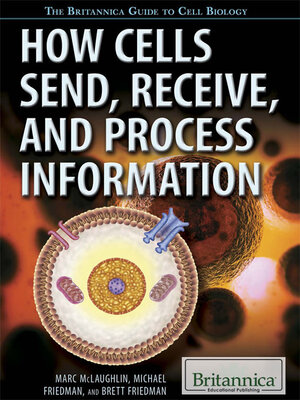How Cells Send, Receive, and Process Information
ebook ∣ The Britannica Guide to Cell Biology
By Kathy Campbell

Sign up to save your library
With an OverDrive account, you can save your favorite libraries for at-a-glance information about availability. Find out more about OverDrive accounts.
Find this title in Libby, the library reading app by OverDrive.



Search for a digital library with this title
Title found at these libraries:
| Library Name | Distance |
|---|---|
| Loading... |
Bacteria, archaea, algae, fungi, protozoans, animals, and plants consist of one or more cells. DNA controls how the cell reproduces and functions, and determines which traits are inherited from previous generations. In eukaryotes, the DNA is contained within a nucleus. Plants, animals, fungi, and many microorganisms are eukaryotes. Readers discover that in eukaryotic cells, a variety of organelles, including the nucleus, ribosomes, Golgi apparatus, and endoplasmic reticulum, work together to manufacture proteins, and with other organelles enable the cell to send, receive, and process information so that it can maintain a stable equilibrium.







